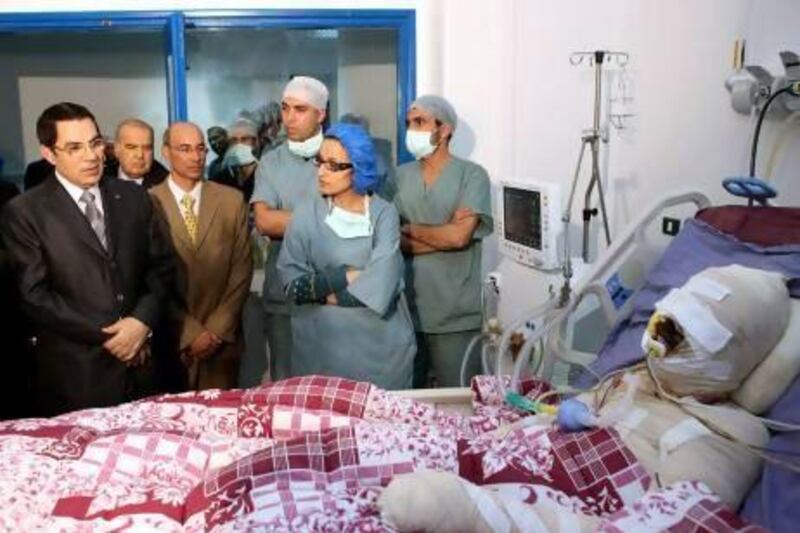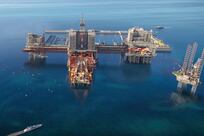Clear your mind for a moment and start to think about a selection of key events in modern history. What do you see when asked to remember the Vietnam War or the fall of Baghdad in 2003 or the Lockerbie bombing?
Do you see Nick Ut's black-and-white image of the contorted face of a scared little Vietnamese girl, burns all over her body, running down a tarmac road? Do you see an enormous statue of Saddam Hussein resting at an impossible angle as it is torn down from its marble plinth in central Baghdad? Do you see the shattered cockpit of a Pan-Am Boeing 747 being pored over by crash-site inspectors below slate grey wintry Scottish skies?
Now consider the Arab Spring. What images reveal themselves? What arrives is, probably, a shape-shifting mass of snapshots delivered amid the fog of protest.
This is, inevitably, a product of today's 24-hour news environment, which conveys huge waves of information across multiple platforms. Where once there was the picture of an event and one format (print), now there are the "top 10" or the "top 25" images, photographed or documented from every angle and transmitted direct to your television screen or via the internet to your laptop, tablet and mobile device.
Writing in The Violent Image, his book on propaganda, imagery and revolutionaries, Neville Bolt calls this "a cacophony of ideas, images and messages."
Bolt argues that the media has been transformed in the past three decades - it would be hard to disagree with this assertion - that these myriad formats feed off each other, "amplifying the reach and penetration of their messages, skirting various degrees of editorial intervention and often pre-empting them entirely."
What hope, then, for an iconic image to emerge in this disorder?
For it or them to do so - and there is a sequence of Arab Spring photographs that emerges almost in spite of the mountains of YouTube clips and hours of live reporting that envelops the uprisings - one first has to accept that there is no single moment of "shock and awe". Rather, there were a series of shocks. As such, the iconography and the images are inextricably bound to the fall of the icons themselves.
Those shocks, that awe, begins with, of all things, an official photograph. It is here, beside a hospital bed, that the cacophony of Arab Spring imagery begins to find symphony.
In this frame we see the severely wounded body of Mohammed Bouazizi, the unlicensed fruit seller whose actions sparked the region's uprisings.
We see Zine El Abidine Ben Ali visiting him in late December 2010. We see the soon to be deposed Tunisian president's eyes resting on the heavily bandaged body of the patient, his hands crossed awkwardly across his body. Ben Ali may already know that his symbolic visit will be deemed too little, too late by the Tunisian people. We see three members of the hospital medical staff leaning towards him, their arms crossed in uncomfortable unison, their stares inquisitive and mistrustful.
Bouazizi's singular protest spurred the Arab Spring and the four revolts that reached a definite outcome - in Tunisia, Egypt, Libya and Yemen - and even those uprisings that are still to find an ending were, as Elliott Colla reminds us in his introduction to Now That We Have Tasted Hope (an anthology of writing about the Arab Spring), about "making spaces public, taking public space and retaking it again if need be."
As such, the ebb and flow of revolution and counter-revolution - the cut and thrust embodied in the words of the popular chant of "Al shab yurid isqat Al nizam" (the people want to topple the regime) - became contests of geography. Only once one accepts this principle can the key images begin to fall into place behind Bouazizi.
We move from the hospital ward to Avenue Habib Bourguiba and a lone Tunisian protester - a loaf of bread clasped tightly in his raised right hand, his mouth half-open as if caught amid a rallying call - surrounded by a barrage of burly state policemen.
It is here that we fully comprehend that the protests are, as Lin Noueihed and Alex Warren record in their book The Battle for the Arab Spring, a "battle for dignity and justice after years of repression".
Next we see Tahrir Square from above, its arena swelled with thousands of demonstrators and adorned by the impromptu fireworks display that marked the fall of Hosni Mubarak in February 2011. We see the counter-revolutionary surge in the ugliness of the infamous "camel battle" a few days earlier as the regime bit back against the uprising.
We also find enduring images in the slow fall of Muammar Qaddafi, from the grotesque and gauche gold furniture found inside his Tripoli compound when it was finally overrun, to the graffiti-marked storm drain in Sirte where the Colonel met his desperate end.
But we do not find these images yet in Syria. The avalanche of images documenting the destruction of that country is, as yet, too overwhelming for history to fully make sense of. They will arrive, no doubt, but not until the disorder of Syria has moved towards a post-Assad order.
Instead, a final iconic image returns us to a medical setting of sorts, and to the shock of seeing a Hosni Mubarak lying prostrate on a stretcher, his body covered by a sheet, as he awaits sentencing in a Cairo courtroom.
Thus, the images that define the Arab Spring are to be found in the portraits of protest, the public spaces where these demonstrations played out and the immovable leaders they eventually displaced.
nmarch@thenational.ae






